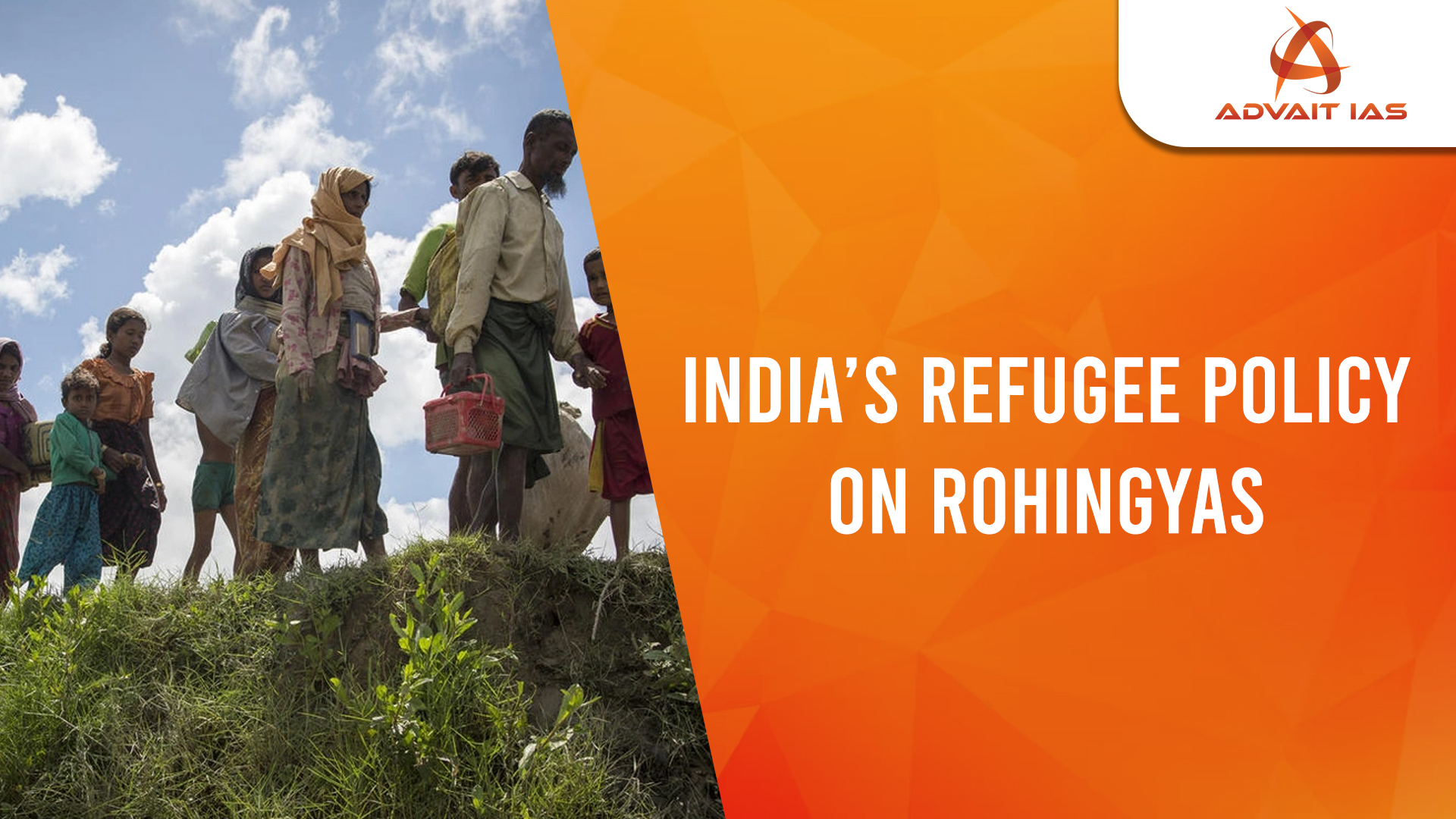A recent report by The Azadi Project and Refugees International highlights critical gaps in India’s refugee policies concerning the Rohingya community.
Rohingya Issue
- Background: The Rohingya, a Muslim ethnic minority from Myanmar, are among the world’s largest stateless populations as Myanmar denies them citizenship.
- Persecution: They have endured decades of violence, including genocidal campaigns by Myanmar’s authorities, forcing them to seek refuge in neighboring countries.
- Global Refuge: Approximately 2.8 million Rohingyas are scattered across nations like Bangladesh, Malaysia, India, and Indonesia.
- In India: According to UNHCR, around 22,500 Rohingyas live in India, facing issues such as lack of legal recognition, arbitrary detention, and human rights violations.
India’s Refugee Policy on Rohingyas
- Legal Framework: India lacks a domestic refugee law and has not signed the 1951 Refugee Convention or its 1967 Protocol.
- Governance: Rohingyas are classified as illegal migrants under the Foreigners Act, 1946, and the Passport Act, 1967.
- Judicial Stance:
-
- The Supreme Court, in Mohammad Salimullah v. Union of India (2021), held that Rohingyas cannot be deported without due process but acknowledged national security concerns.
- High Courts, in cases like Ktaer Abbas Habib Al Qutaifi v. Union of India, have interpreted the principle of non-refoulement as part of Article 21 (Right to Life).
- Exclusions: The Citizenship Amendment Act (CAA), 2019, excludes Muslim refugees, including Rohingyas, from its purview.
International Conventions on Refugees
- 1951 Refugee Convention and 1967 Protocol: These enshrine the principle of non-refoulement, prohibiting the return of refugees to places where they may face persecution.
- Other Treaties:
-
- International Covenant on Civil and Political Rights (ICCPR): Protects individuals from torture or inhuman treatment upon return.
- Convention on the Rights of the Child (CRC): Focuses on the welfare of refugee children.
Challenges in India’s Refugee Policy
- Legal Gap: The absence of a unified refugee law results in inconsistent treatment.
- Detention and Conditions: Detained Rohingyas face harsh conditions, including in facilities like Assam’s Matia transit camp.
- Security Concerns: Rohingyas are often viewed as potential security risks, influencing judicial and policy decisions.
- NGO Constraints: The revocation of FCRA licenses limits NGOs’ ability to provide legal and humanitarian assistance.
- Exclusionary Policies: The CAA’s exclusion of Muslim refugees challenges India’s secular constitutional principles.
Way Forward
- Legislative Framework: Enact a comprehensive refugee law aligned with international standards.
- Judicial Oversight: Strengthen judicial protections for refugees, ensuring adherence to non-refoulement under Article 21.
- Improved Conditions: Enhance facilities in detention centers to ensure humane treatment, including access to food, healthcare, and education.
- Community Engagement: Support NGOs and local communities in refugee rehabilitation efforts.
- Global Cooperation: Collaborate with international organizations like UNHCR for sustainable solutions.






